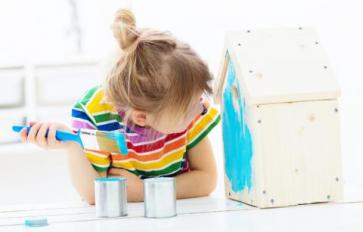
Experts are unanimous on this one – routines are good for children. As part of the UK Millennium Cohort Study (MCS), researchers tried to find a link between intellectual development and bedtime routine on over 11,000 children aged seven. The children were tested on three grounds – mathematics, reading and spatial awareness. The researchers concluded that inconsistent bedtime, especially during a child’s early and developmental years, could impair a child’s cognitive abilities and even have detrimental long-term health effects. Plus, your child needs to have his or her beauty sleep to grow well and thrive in his school, play or general horseplay time.
The end result: putting your kids to bed at the same time in their early years means you have better-adjusted adults later.
The very first step of establishing routines is to find and affirm a routine that works for the family, is adhered to but flexible on special days, and stresses parent-child communication. What you don’t do is “force” or “bribe” a kid to go to bed. Instead, establish a routine and slowly get your kid in line, even it means using a whole month to finally get your child to toe the line.
Establishing routines brings about order into children’s lives and helps them start taking on age-related responsibility, learn social skills, increase their cognitive abilities and even improve their motor skills. The very idea of a routine is based on development – a routine helps a child create brain maps related to words and actions. This means better learning, better memory, and overall better development.
What Is A Good Routine?
There are plenty of factors other than just the time factor that involves making for a good routine: it has to be fun and interesting and something that puts a smile on everybody’s face – a bedtime routine needs to inspire happy dreams, not scary ones.
- Be firm, but flexible: It’s great to have a routine, but don’t be rigid – if your child wants to wash his/her hands before brushing, or after – that’s fine as long as s/he does both. On special days, say a birthday or a vacation, you can delay the routine by an hour or so to give the child a break.
- Make time for the whole family: Routines are great ways to get the whole family together – make at least one mealtime a family affair with everyone doing small chores. Someone can lay the plates, serve the salad, and fill the water tumblers… Little things that kids can do to pitch in will not only make them feel like “adults” but also improve their motor coordination. And for the parents – no screaming over spilled water!
- Break it down into small, consistent steps: A routine can help your child learn to be independent. Break down a routine into verbose steps so that your child learns to associate words with actions, and is able to perform at least a couple of those steps independently.
- Be creative and incorporate play: Make little creative things around the routine. Say every day, your child or children get to arrange the salad a different way. Or maybe it’s the brushing song you sing on an everyday basis. Or try learning a new word at the dinner table, and making a funny rhyme around it. Make sure it’s fun and interesting so that your child likes the routines, instead of rebelling against them.
- Interweave the child’s interests: If your child loves rockets, or is fond of dogs, or is in an I-am-a-princess phase, the bedtime routine can incorporate that by interesting bed linen, jammies and of course, stories. Make it fun, please, for the kids – and have some fun along the way as well.
Happy bedtime to you and the kids!








